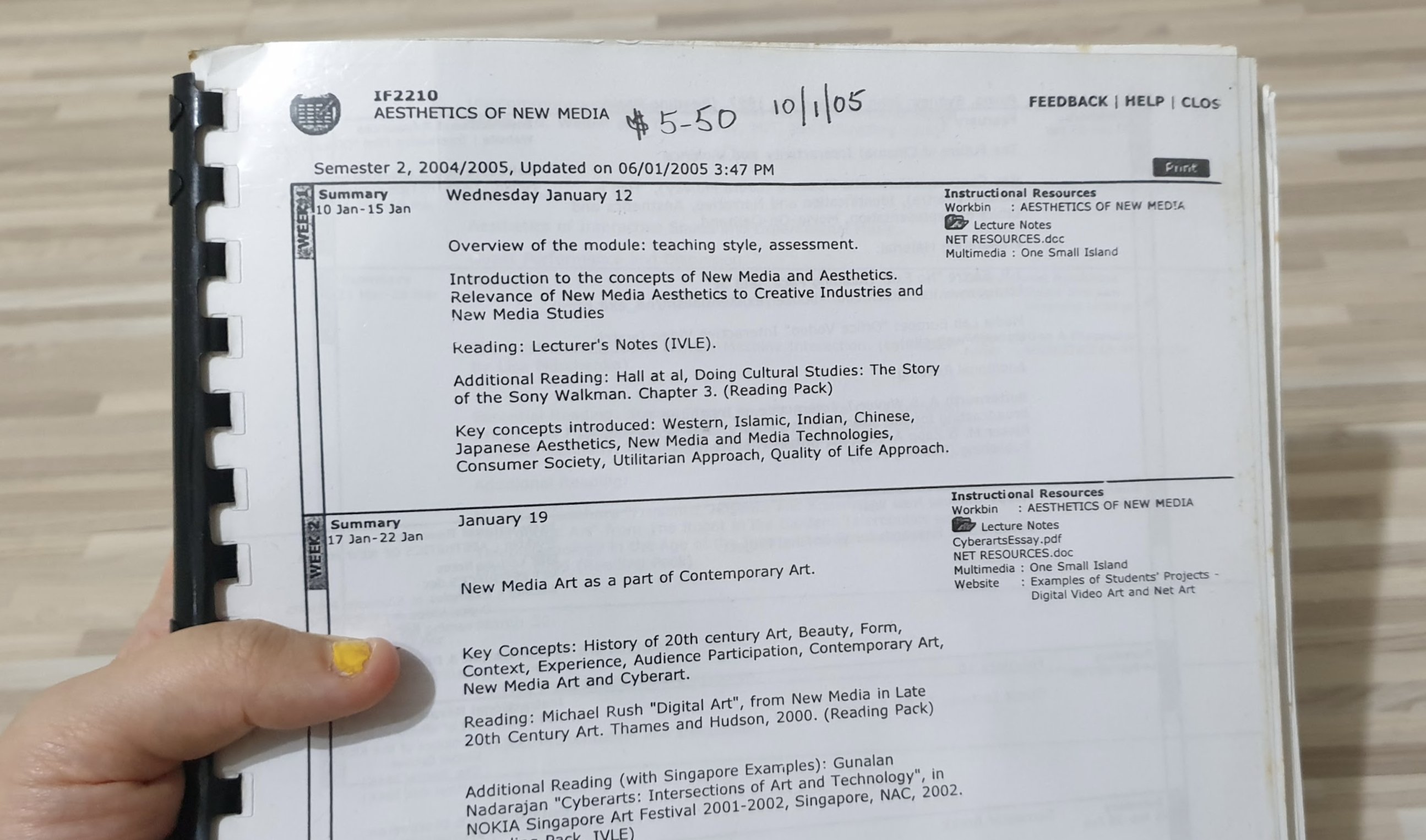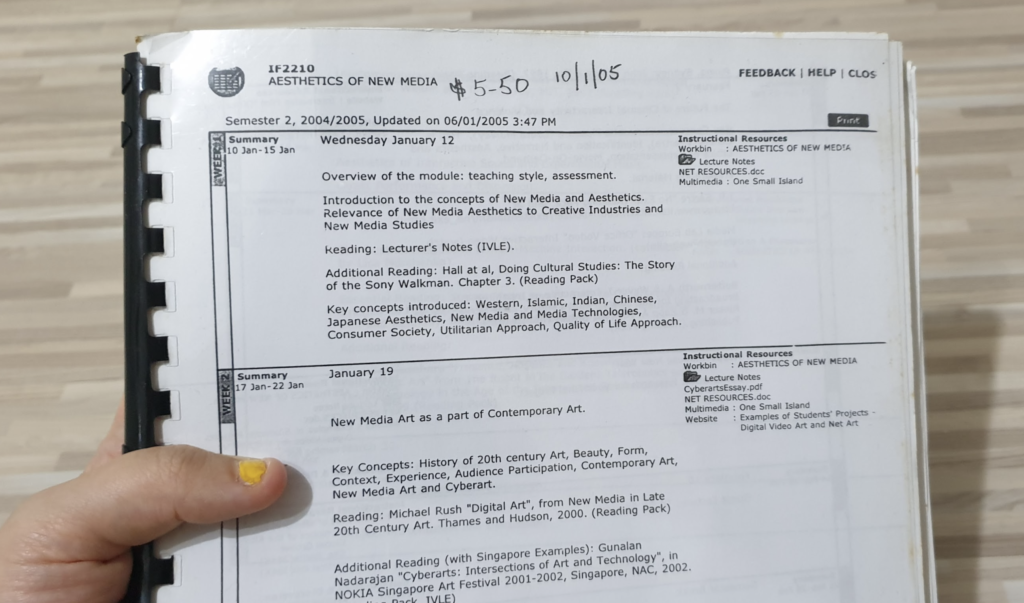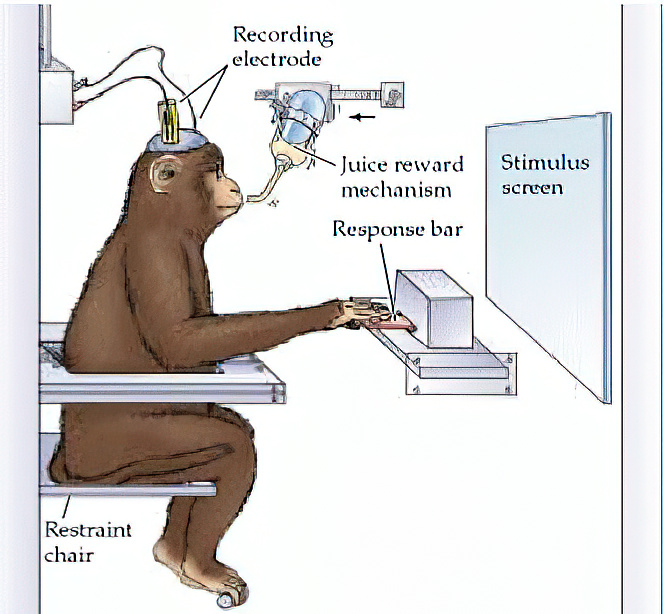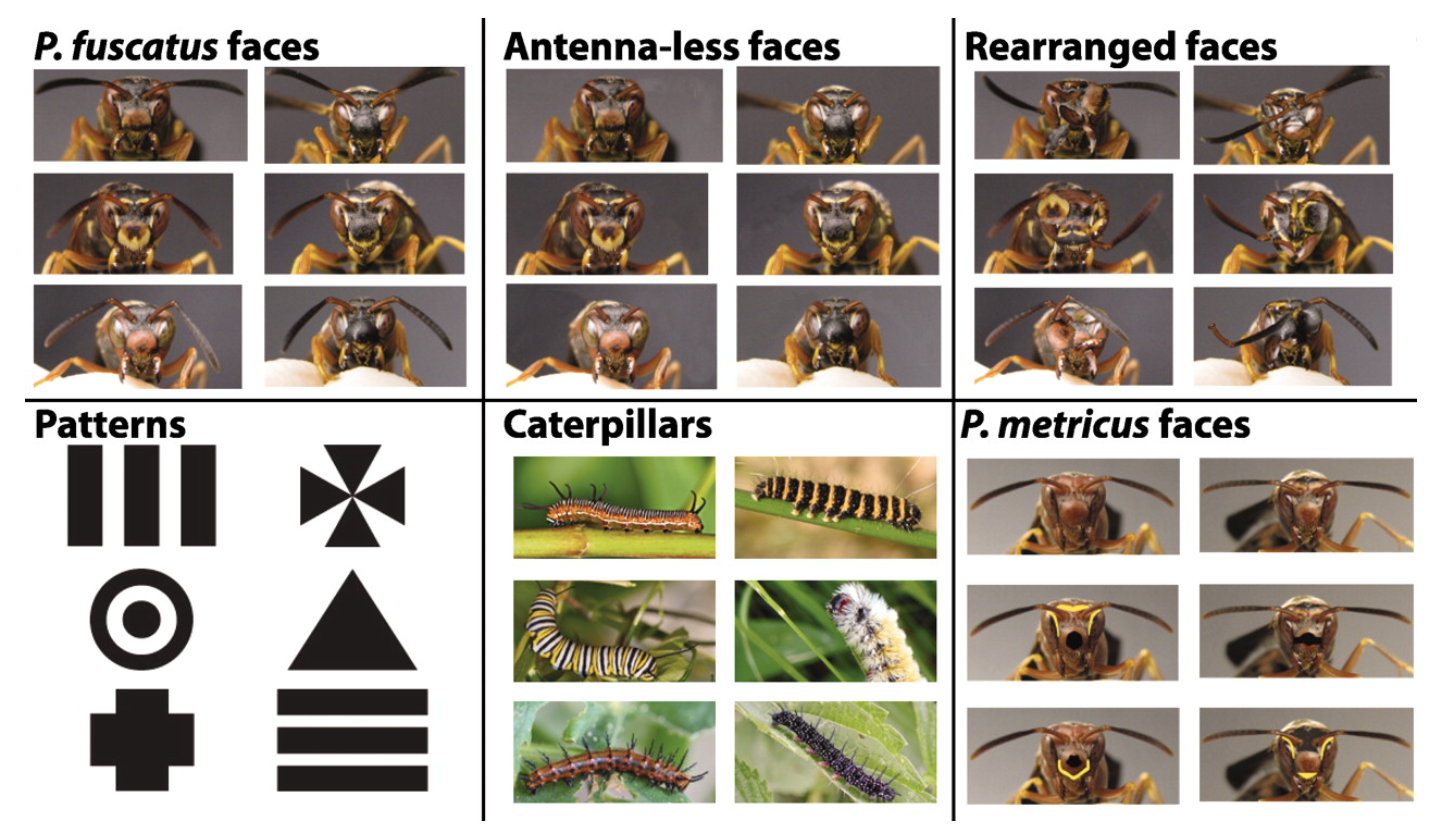
“Making Art” was my rejection of theory without practice
debbie ding
- 0
- 266
This semester I’m taking a Proseminar on Art, Design and Media which describes itself as hoping to give the ADM PHD students a common intellectual ‘genealogy’ to speak of. And so we started going through a reading list of “classic” critical theory readings that immediately reminded me, somewhat nostalgically, of the time when I did my undergrad studies in literature.

People often ask me how I ended up working and teaching in art/design if my undergraduate studies had been in English literature. I don’t think I had ever been a particularly good or scholarly student of literature, and the truth is that I had always thought of my turn towards making art as a reaction to the deeply theorectical approaches to literature and art that I was exposed to in those years; perhaps you could say that I was rejecting the study of theory before I had the chance to develop my own creative practice.

These notes are 17 years old?!?! Not actually a Literature module;
This was the only CNM module I took during my undergrad,
and perhaps it did make an impression…
I saw this problem of theory over practice in many other facets of the university at the time – for example, at NUS I loved going to the library to watch films on demand, and I became interested in taking many modules on film theory. But in terms of formal learning, nothing was available to you at the time if you wanted to make an actual film yourself, which I found quite bizarre. I was told that you had to go back to do a Diploma at the polytechnic if you actually wanted to learn about the physical nuts and bolts of film production. (But I hadn’t even known I had “skipped” a step along the way by going to university via the junior college route in Singapore). It seemed as if the making or practice was considered a lower level skill as compared to the theory.
At NUS, I joined nu(studios), a student filmmaking studio which also, very convieniently, had a big club room next to english lit department – that was airconditioned. Yes, it may be true that at first I came for the aircon, but then I stayed for the company and many like-minded creative people there. Everyone came from very different backgrounds, but wanted to get their hands dirty making films. Everything was DIY-ed at the time. I remember them organising events where they brought in filmmakers for conversations and we met people like the late eccentric Toh Hai Leong who made the cult film Zombie Dogs (2004) and experimental filmmakers who worked with only digital mediums and digital glitch, and rather than being embarassed about the digital, we fully embraced the cheap and guerilla digital filmmaking approach. Many people I met back then from nu(studios) have found their place working in the arts and film-making industry even till today. Some of them also gave me my first proper gigs as a graphic designer whilst I was still an undergrad (shout outs to Kristin Saw who was with The Substation back then and all the Moving Images people I worked with over the years!)
I was still figuring out what I wanted to make in the world, so on the outside I was going to exhibitions and dabbling around in the arts, making terrible music, horrifying sound art and noise, shambolic theatre and film set design and piecemeal collaged sound design, performance art, art writing, a whole lot of failed experiments now swept under the carpet. A lot of it was thanks to having spaces like The Substation which gave me a platform to create experimental work during those years.
What really helped me figure out my direction was just going out and making lots and lots of stuff. After some time, I was very relieved to see that I could look back and some manner of logic could be seen in my ways. Based on personal experience, I can now say that if you come up with all the ideas yourself – even if you didn’t write out any explicit roadmap for yourself to follow – you will discover that there is some kind of internal logic and consistency to the works you make.
The weird part about it all is that even till today, although I thought that all along I was internally rejecting theory over practice, my first impulse is still to read art as a text. And my own process as artist is still first to write and then to translate that into art. Looking back, I realise that in my earlier writings I would speak of my work in the third person in order to assume some sort of subjectivity or distance from making, so that it would be possible to establish what I was doing as some kind of methodology for making.
Art and writing are still inseperable for me. I don’t just want to simply enjoy a pure transcendental experience, to marvel at the wideness of the cosmos. As audience, I will go to an art experience and enjoy it but it won’t end there. My experience of art won’t feel complete unless I go home and read (and maybe even write) about the enjoyment of the art experience too. I might even derive more enjoyment from the final step. (Help! Its all twisted! Interpassivity has gotten to me!)
To speak of the sum of one’s intellectual geneaologies – is this the intellectual geneaology that I have been left with after first studying English Literature (theory) before making art (practice)?

